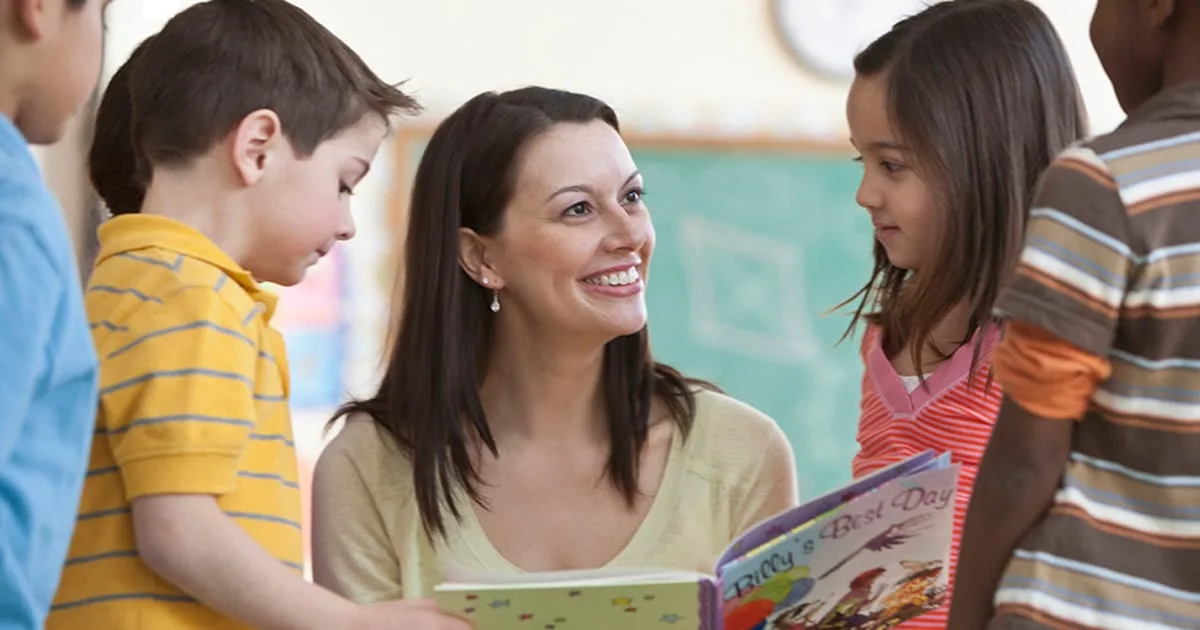True education is about much more than just academics and test scores. It focuses on developing the whole child into a responsible, compassionate, and engaged citizen. The purpose of true education goes beyond rote learning to encourage curiosity, critical thinking, creativity, collaboration, and the development of life skills and strong character. Academic knowledge certainly has an important place, but is not the sole focus.
True education aims to nurture ethical, empathetic, and informed individuals who can think independently, work well with others, and contribute meaningfully to society. It provides students with the tools not just to make a living, but to make a difference. The goal is to produce graduates who are not only prepared for career and college, but also for life. True education develops the head, heart, and hands – training both the intellect and the character.
Developing Character
True education aims to develop character and morality in students. Schools play a vital role in shaping the values and ethics of young people. Academic lessons should be supplemented with teachings on integrity, honesty, respect, responsibility, and compassion.
Educators have a duty to instill strong principles in students to prepare them for adulthood. This involves modeling good behavior, setting clear expectations, teaching ethics, and reinforcing positive actions. Schools that actively cultivate moral character help students gain self-awareness, learn right from wrong, and make good choices.
Education should emphasize the importance of compassion. Acts of kindness, service learning projects, and opportunities to help others teach students to care for people. Developing empathy and emotional intelligence allows students to appreciate diverse perspectives. A well-rounded curriculum shows students how their actions impact others. This fosters civic awareness and inspires community involvement.
True education develops the whole child. Alongside math, science, and language arts, lessons in ethics, values, and morality are essential. These teachings help shape students into responsible citizens and caring human beings. Academic success is hollow without strong principles and compassion. Schools have a profound duty to develop moral character in youth.
Encouraging Curiosity
Fostering lifelong learning and inquiry should be a central aim of education. Children are innately curious, and a quality education nurtures and expands this sense of wonder. Lessons should be designed to spark curiosity, not merely transmit facts.
Educators can encourage curiosity by:
Asking open-ended questions that have no single right answer, prompting students to think more deeply.
Allowing time for exploration and discovery, rather than rigidly sticking to lesson plans.
Making real-world connections to pique student interest in learning more.
Introducing paradoxes and mysteries that challenge assumptions.
Teaching research skills and how to find reliable information.
Promoting critical thinking over rote memorization.
Cultivating passion for learning by tapping into individual interests.
Creating projects and hands-on learning activities.
Allowing students freedom to ask questions and challenge ideas respectfully.
The goal is to instill a lifelong love of learning, not just teach students to be passive consumers of information. Education should fuel curiosity, not stifle it. This enables students to continue growing intellectually long after their formal schooling ends.
Teaching Critical Thinking
Critical thinking is a crucial skill that allows people to analyze information objectively, question assumptions, and make reasoned conclusions. Schools have an important role to play in developing critical thinking skills in students.
Teachers can promote critical thinking by encouraging students to ask probing questions about the material they are learning. When presenting information in class, teachers should model how to evaluate sources, look for underlying assumptions, and consider different perspectives. Class discussions where students respectfully debate ideas are a great way to sharpen critical thinking abilities.
Specific techniques that help strengthen critical thinking include:
- Posing open-ended questions without simple right/wrong answers
- Teaching how to spot logical fallacies and biases
- Assigning projects that require gathering and analyzing information from multiple sources
- Encouraging students to explain their reasoning and thought process, not just state their conclusions
- Refraining from giving opinions, but guiding students to think independently
Critical thinking skills allow people to push past knee-jerk reactions, unexamined biases, and conventional wisdom. A true education develops the ability to dig deeper, ask why, and make connections that others may miss. By intentionally teaching critical thinking, schools equip students to face complex issues in the real world with intelligence, empathy and nuance.
Promoting Collaboration
Collaboration is a critical skill for students to develop. The ability to work together, listen, and communicate effectively prepares students for success in future careers and as engaged citizens.
Schools can promote collaboration in many ways. Group projects require students to cooperate, divide responsibilities, and synthesize everyone’s contributions. Assigning roles within groups helps students learn how to lead and support team members. Reflection after projects allows students to discuss what went well and how they can improve team dynamics.
Active listening and nonviolent communication should be modeled and taught. Simple practices like making eye contact, rephrasing others’ statements, and asking clarifying questions demonstrate attentive listening. Nonviolent communication focuses on understanding needs and making requests, rather than blaming or demanding. Teachers can facilitate class discussions where students reflect on their communication styles.
Collaborative games and simulations engage students in collective challenges. Educational escape rooms and scavenger hunts require teamwork. Model United Nations and mock trials allow students to roleplay cooperation. Debates teach respectful disagreement and reaching consensus.
Overall, schools should provide frequent opportunities for peer-to-peer collaboration. Working together in an educational environment prepares students to cooperate successfully in diverse teams, share ideas, and accomplish goals. Collaboration is an essential competency as students transition to higher education and the modern workplace.
Providing Life Skills
A true education goes beyond just academics and prepares students for life after school. While core subjects like math, science, history, and language arts are important, students also need real-world abilities and practical knowledge. This includes skills like:
Financial literacy – Understanding budgeting, taxes, investing, loans, and other monetary matters. Schools should teach basic financial skills.
Communication – Learning how to effectively communicate verbally and in writing. This includes public speaking, writing emails, and interpersonal skills.
Time management – Developing the ability to organize schedules, set goals, and manage time effectively.
Problem-solving – Fostering critical thinking skills to solve problems in innovative ways. This promotes adaptability.
Teamwork and collaboration – Working together in groups, listening to others, and managing conflict. This teaches leadership abilities.
Technology skills – Gaining proficiency with computers, software programs, and digital devices. This is crucial for most careers.
Self-care – Understanding health, nutrition, exercise, and stress management. This promotes long-term wellbeing.
Life skills courses – Offering classes specifically focused on practical life abilities, independent living, careers, and adult responsibilities.
Equipping students with these real-world competencies provides a holistic education that prepares them for adulthood, relationships, higher education, and employment. Life skills are just as essential as academic knowledge.
Preparing for Citizenship
Education plays a vital role in preparing students to be engaged and responsible citizens who contribute positively to society. More than just memorizing facts about government, true citizenship education aims to develop students’ understanding of civic duties, rights, and responsibilities. This involves learning about community issues, developing critical thinking skills, and cultivating attitudes of respect, empathy, and social responsibility.
Schools can promote citizenship in many ways. Social studies and history curricula should connect the past to current events and societal challenges. Discussing current issues in a balanced, nonpartisan way allows students to thoughtfully explore different perspectives. Providing opportunities for students to get involved in service learning, school governance, and activism around issues they care about is also impactful. This gives them real-world experience with civic participation and using their voice.
Equally important is creating an open, inclusive school culture that values diversity and models ethical behavior. Students learn citizenship not just from books but from their day-to-day interactions and observations of adult role models. Promoting democratic principles like equality, human rights, and concern for the common good throughout the school environment helps ingrain these values for life.
True citizenship education is not about telling students what to think but rather equipping them with the skills and knowledge to think critically about complex issues. It develops their ability to seek truth, engage civilly with differing views, and contribute to community problem solving. This lifelong civic learning process is essential for nurturing active, responsible citizens committed to advancing democracy and justice.
Developing Creativity
True education encourages students to think creatively and express themselves in innovative ways. In today’s rapidly changing world, the ability to generate original ideas and find new solutions to problems has become more important than ever before.
Educators can nurture creativity in various ways. Providing open-ended assignments and projects allows students to approach topics from different perspectives. Brainstorming exercises teach flexible thinking and how to make connections between disparate concepts. Arts education, including visual arts, music, drama, and creative writing, gives students alternative modes of expression beyond standardized tests.
Teachers should allow time and space for creativity to flourish. Unstructured playtime and recess give students’ minds a chance to wander and make new associations. Classrooms and schools decorated with student artwork send the message that creative efforts are valued. Showcasing creative student projects also builds confidence.
Self-expression is a vital part of identity development. Giving students creative outlets helps them find their voice and share their unique inner worlds. This not only builds self-esteem but teaches important communication skills. Self-expression exercises like journaling, storytelling, and discussing personal interpretations of literature and art encourage students to clarify their own thoughts, emotions, and perspectives.
Cultivating creativity and self-expression prepares students to meet the challenges of an uncertain future with flexibility, originality, and imagination. A true education nurtures the creative potential within every child.
Cultivating Well-being
A true education cultivates the well-being of the whole child, including their emotional, physical, and mental balance. Schools have a responsibility to support students’ well-being just as much as their academic development.
Emotionally, schools should provide a nurturing environment where students feel safe, cared for, and able to express themselves. This involves fostering positive teacher-student relationships, anti-bullying policies, and access to counseling when needed. Teaching social-emotional skills like self-awareness, self-regulation, empathy, and conflict resolution helps equip students to handle life’s challenges.
Physically, schools should promote healthy habits like exercise, nutrition, sleep, and hygiene. Physical education classes, recess time, nutritious cafeteria options, and lessons on health and anatomy provide the knowledge and opportunities students need. Schools should also be designed with students’ physical needs in mind, with natural light, fresh air, ergonomic furnishings, and space to move.
Mentally, schools need to recognize the stress students face from academics, social situations, family life, and the changes of growing up. Providing adequate support services, promoting a balanced lifestyle, teaching stress management skills, and allowing time for reflection can help students maintain mental wellness. A true education takes care of the whole student.
Conclusion
A true education should aim to develop the whole child through character, curiosity, critical thinking, collaboration, life skills, citizenship, creativity, and well-being. The goal is to nurture ethical, engaged, and well-rounded individuals who can thrive in life.
With this kind of holistic education, students will gain more than just content knowledge. They will develop the skills, character, and well-roundedness needed to lead ethical, fulfilling, and successful lives as individuals and citizens. The impacts of such an education will ripple out into society at large.

